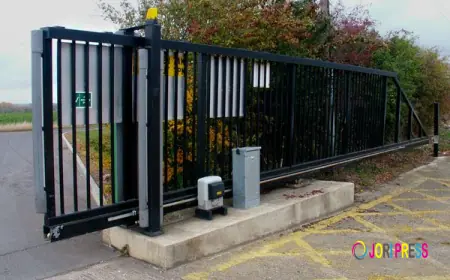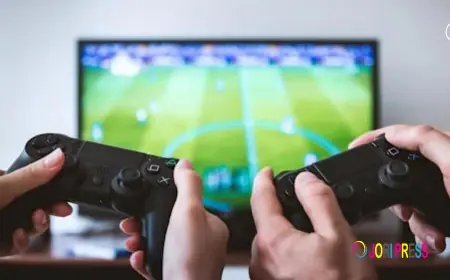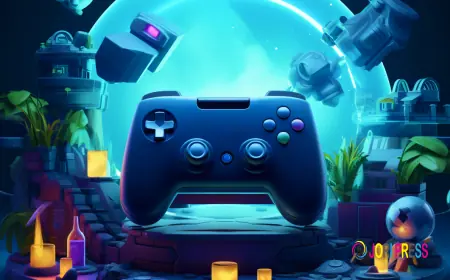Unlock lasting power and keep your device running longer
Modern iPhones are incredible pieces of technology, capable of doing so much. From Browse the web and capturing stunning photos to playing demanding games and staying connected with friends and family,
Modern iPhones are incredible pieces of technology, capable of doing so much. From Browse the web and capturing stunning photos to playing demanding games and staying connected with friends and family, our iPhones are central to our daily lives. However, all this power comes at a cost: battery life. There's nothing more frustrating than seeing your iPhone's battery percentage dwindle rapidly, especially when you're far from a charger.
The good news is that you don't have to live with a constantly dying iPhone. By understanding how your iPhone's battery works and adopting some smart habits and settings adjustments, you can significantly extend iPhone battery life and enjoy extended battery life for iPhone for longer stretches.1 This isn't just about making your current charge last longer; it's also about preserving the overall health and lifespan of your iPhone's battery in the long run.
The Science Behind Your iPhone's Battery
Before diving into tips, let's briefly understand your iPhone's battery. iPhones use lithium-ion batteries.2 These batteries are chosen for their ability to charge quickly and hold a lot of power in a small package.3 However, like all rechargeable batteries, they degrade over time due to a process called "chemical aging."4 This means they gradually lose their ability to hold a full charge, leading to shorter battery life and sometimes even slower performance.5
Factors that influence this chemical aging include:
-
Charge Cycles: Every time you fully discharge and recharge your battery (even if it's over several partial charges), it counts as one "charge cycle." Lithium-ion batteries have a limited number of these cycles before their capacity significantly reduces.6
-
Temperature: Extreme temperatures, both hot and cold, are detrimental to battery health. Leaving your iPhone in a hot car or using it in direct sunlight can permanently damage the battery.
-
Charging Habits: While lithium-ion batteries don't suffer from "memory effect" like older battery types, consistently draining them to 0% or keeping them at 100% for extended periods can put more stress on them.
Apple designs iPhones with software and hardware systems to help manage charging patterns and battery temperature, such as "Optimized Battery Charging" and "Optimized Charge Limit," which we'll discuss.8
Practical Ways to Extend iPhone Battery Life: Daily Habits
Many of the most effective ways to extend iPhone battery life involve simple changes to how you use your device daily.
Manual Dimming: Swipe down from the top-right corner (or up from the bottom on older iPhones) to open Control Center and drag the Brightness slider down.
Auto-Brightness: Go to Settings > Accessibility > Display & Text Size, then turn on Auto-Brightness.9 This feature automatically adjusts your screen's brightness based on ambient light, saving battery in darker environments.
Use Wi-Fi Whenever Possible:
Using Wi-Fi consumes less power than cellular data (especially 5G).11 Whenever you're in an area with a reliable Wi-Fi network, connect to it.
Enable Low Power Mode:
This is your go-to feature when your battery is getting low (it usually prompts you at 20% and 10%). Low Power Mode temporarily reduces background activity, slows down CPU and GPU performance, limits visual effects, reduces display refresh rate (on Pro models), and pauses iCloud Photos, automatic downloads, and email fetch.12 It's incredibly effective for extended battery life for iPhone in a pinch. You can enable it from Settings > Battery or add it to Control Center for quick access.13 It automatically turns off when your iPhone charges to 80%.
Manage Background App Refresh:
Many apps continue to update content in the background even when you're not using them.14 While convenient, this drains battery.
You can turn it off completely, allow it only on Wi-Fi, or, ideally, go through the list and selectively turn it off for apps you don't need constantly updated (e.g., social media, news apps).
Smart Charging Habits for Long-Term Battery Health
Extending your iPhone's battery life isn't just about daily usage; it's also about how you charge and care for your battery over its lifespan.
Enable Optimized Battery Charging:
This is perhaps the most important setting for long-term battery health. When enabled (Settings > Battery > Battery Health & Charging), your iPhone learns your daily charging routine and will delay charging past 80% until just before you typically need it.24 This reduces the time your battery spends at a full charge, which is known to degrade lithium-ion batteries faster.
When to Consider a Battery Replacement
Despite all optimization efforts, iPhone batteries do eventually wear out.32 You can check your battery's "Maximum Capacity" in Settings > Battery > Battery Health & Charging. If this percentage drops below 80%, Apple generally recommends a battery replacement. Signs that it might be time for a new battery include.
-
Significantly reduced battery life.
-
Unexpected shutdowns, especially when the battery isn't critically low.
-
Slowed performance (iOS automatically "throttles" performance on older, degraded batteries to prevent unexpected shutdowns).
-
Your iPhone takes a long time to charge or doesn't hold a charge well.
Replacing the battery can give your iPhone a new lease on life, restoring its performance and providing extended battery life for iPhone as if it were new.
Conclusion: Empowering Your iPhone's Endurance
By actively managing your iPhone's settings and adopting smart charging habits, you can significantly extend iPhone battery life and enjoy extended battery life for iPhone sessions. It's a combination of being mindful of your usage, leveraging Apple's built-in optimization features, and understanding the basics of battery health. With these tips, you'll be able to keep your iPhone powered up and performing optimally for much longer.
Frequently Asked Questions (FAQs)
1. Does Low Power Mode really save battery?
Yes, absolutely! Low Power Mode is one of the most effective ways to extend iPhone battery life when your charge is low.34 It works by temporarily reducing or disabling background activities like mail fetch, automatic downloads, background app refresh, and visual effects, as well as limiting CPU/GPU performance and screen refresh rate.35
2. Is it bad to charge my iPhone overnight?
Generally, no, especially if "Optimized Battery Charging" is enabled. Your iPhone is smart enough to manage the charging process. Optimized Battery Charging learns your routine and will hold the charge at 80% until closer to when you typically unplug it, minimizing the time spent at 100%.36 However, consistently keeping it at 100% for many hours without this feature active can cause more wear over time.
3. Should I let my iPhone battery drain to 0% before charging?
No. This is an outdated myth from older battery technologies. For lithium-ion batteries, it's actually better to avoid letting the battery completely drain to 0% regularly. Frequent "deep discharges" can put more stress on the battery.37 Aim to charge it before it gets critically low, ideally before it hits 20%.
4. How often should I fully charge my iPhone?
You don't need to aim for full charges every time. Partial charges are perfectly fine and even beneficial for the battery's longevity. Aiming to keep your battery between 20% and 80% is often recommended for the best long-term battery health.
5. Does closing apps in the App Switcher (swiping them away) save battery?
Not necessarily, and sometimes it can even use more battery. When you swipe an app away from the App Switcher, you're essentially forcing it to close completely. The next time you open it, it has to launch from scratch, which can consume more power than simply resuming it from a suspended state. iOS is designed to manage background apps efficiently. Only force close apps that are misbehaving or actively draining battery (which you can check in Battery Usage).
6. Do extreme temperatures really affect battery life?
Yes, significantly. Heat is the biggest enemy of lithium-ion batteries. Exposing your iPhone to temperatures above 35°C (95°F) for extended periods can permanently reduce its battery capacity.38 Cold temperatures can temporarily reduce battery life, but performance usually returns to normal when the device warms up. Avoid leaving your iPhone in direct sunlight, hot cars, or extremely cold environments.
7. How do I check my iPhone's battery health?
Go to Settings > Battery > Battery Health & Charging. Here you will see "Maximum Capacity," which is a percentage indicating your battery's current capacity relative to when it was new.39 If it's below 80%, a battery replacement is often recommended for optimal performance.
8. Is wireless charging worse for battery health than wired charging?
Wireless charging can sometimes generate slightly more heat than wired charging, and heat is detrimental to battery health.40 However, for everyday use with certified wireless chargers, the difference is usually negligible for most users. If you notice your phone getting excessively hot during wireless charging, consider taking it out of its case or using wired charging sometimes.
9. Can updating iOS affect battery life?
Yes, iOS updates often include optimizations that can improve battery efficiency. However, sometimes a new update might initially cause slightly higher battery drain as the system re-indexes or new features run in the background. If you experience unusual drain after an update, give it a few days to settle. If it persists, checking your battery usage and applying the tips mentioned above can help.
10. When should I consider replacing my iPhone battery?
You should consider replacing your battery if its "Maximum Capacity" drops below 80%, or if you experience significant battery degradation, such as rapid draining, unexpected shutdowns, or noticeable performance slowdowns, even after trying optimization tips. An official Apple Store or authorized service provider can assess your battery and perform a replacement if needed.41
What's Your Reaction?
 Like
0
Like
0
 Dislike
0
Dislike
0
 Love
0
Love
0
 Funny
0
Funny
0
 Angry
0
Angry
0
 Sad
0
Sad
0
 Wow
0
Wow
0


















































